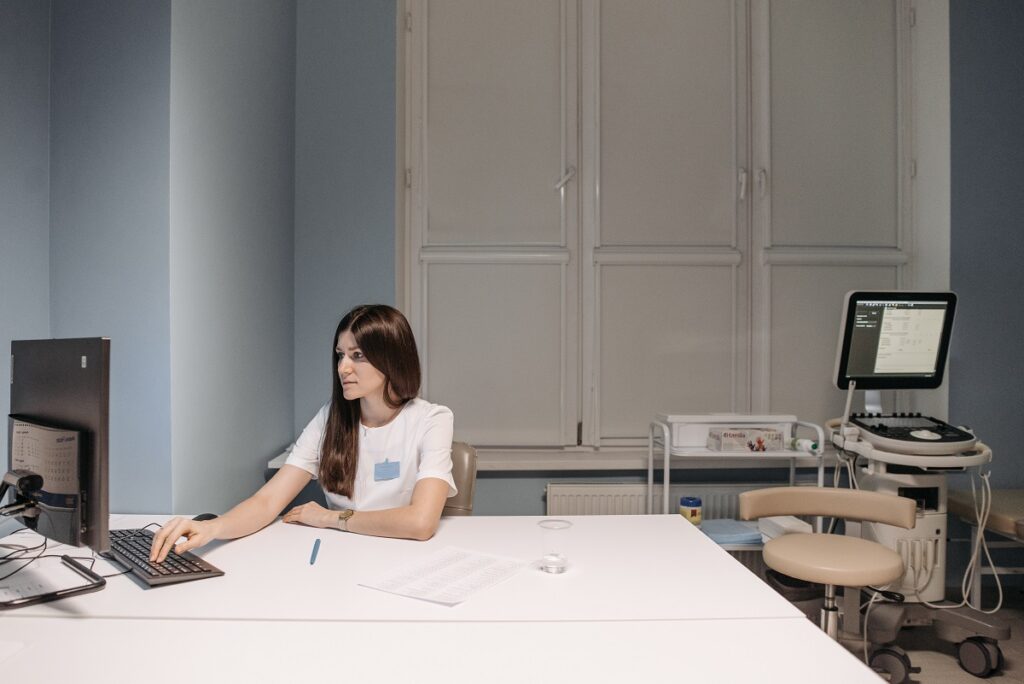
With the demand for healthcare at an all-time high, telehealth has become an accessible way to get much-needed medical care. A study by the USA Assistant Secretary for Planning and Evaluation on telehealth found that in 2021, one in four respondents had used telehealth services in the previous four weeks. This was a considerable jump from telehealth use before 2020, wherein less than 1% of medical visits were through telehealth.
The success of telehealth largely stems from its convenience for both patients and medical providers. Patients can receive proper treatment through various telecommunication technologies without an in-person visit. For healthcare professionals such as nurses, this has enabled them to provide care and monitoring almost anywhere for multiple patients while reducing any exposure to infectious diseases. Given these advantages, telehealth nursing has become a popular choice among many. If you’re interested in learning more about telehealth nursing, listed below are four things you should know:
Telehealth services can ease nursing shortages
Aside from the benefits mentioned above, telehealth plays a crucial role in easing nurse shortages. Non-profit researchers from Washington note that across 31 states, 116 rural hospitals have closed over nine years— severely reducing access to critical healthcare for people living in far-flung areas. This was driven by the staff shortage of nurses, which has seen a drop of 100,000 just between 2020 to 2021. Telehealth allows consultations to be conducted remotely, so rural hospitals don’t have to be overwhelmed by non-urgent cases and can continue providing quality care. For those interested in becoming nurse practitioners, the law is also changing to help deal with the shortage. For example, nurse practitioners in California are now allowed to treat patients without physician supervision. This is “a move that aims to expand access to care in the Golden State at a time when workforce shortages plague just about every corner of health care”.
Telehealth training ensures nurses are qualified for the job
Everyone needs accessible, quality healthcare, but not all nurses can adequately meet the unique demands of telehealth. If you’re a nurse interested in transitioning into telehealth, you must have relevant degrees and experience in your selected specialization. This is especially true for those looking to become a qualified nurse practitioner. Remote nurse practitioners in Minnesota are required to have a current registered nurse (RN) license, as well as a certification from a nationally recognized state nursing board. For regular telehealth nurses, some employers may also require you to fulfill the same training as your on-site colleagues; this makes it crucial to know how to use the relevant technology or platforms and the best practices for a good bedside manner. Considering how competitive telehealth positions can be due to their convenience, having ample experience can ensure you remain relevant in the field.
Telehealth practices lead to better patient outcomes
Multiple types of telehealth nursing services improve the efficiency of healthcare. Some ways telehealth is provided to patients are:
- Triage – Before patients arrive at hospitals or health centers, nurses can triage patients over the telephone to assess whether the emergency room is necessary or if they can wait to consult a non-urgent medical professional.
- Real-time telemedicine – Nurses can facilitate medical check-ups with patients, much like an in-person consultation.
- Store-and-forward – This technology enables nurses to transmit a patient’s medical information, like images and lab reports, to appropriate medical specialists to help in treating patients.
- Remote patient monitoring – For non-life-threatening conditions, nurses can use technology to monitor vital signs and disease-related data. They are in charge of teaching patients how to use wearable devices and other gadgets meant to measure metrics like blood pressure and blood glucose.
Remote patient monitoring through telehealth reduces hospital readmissions
In a hospital or medical center, one of the primary roles of nurses and nursing assistants is to monitor and record a patient’s vitals. As mentioned earlier, nurses can take advantage of remote patient monitoring (RPM) or telemonitoring technology, allowing them to collect patient biometrics without meeting them directly. As found in a journal review by BMJ Journals on RPM, these tools enable the better monitoring of chronic conditions, such as cardiovascular disease and chronic obstructive pulmonary disease. Across all disease conditions, RPM has reduced hospital admissions, length of stay, and emergency department consultations across 49% of studies, showcasing the effectiveness of preventative care. Nurses can make use of RPM to not only look after their patients remotely but also improve their quality of life.
If you’re interested in learning more about nursing careers, make sure to check out our Career Category for more information.

















